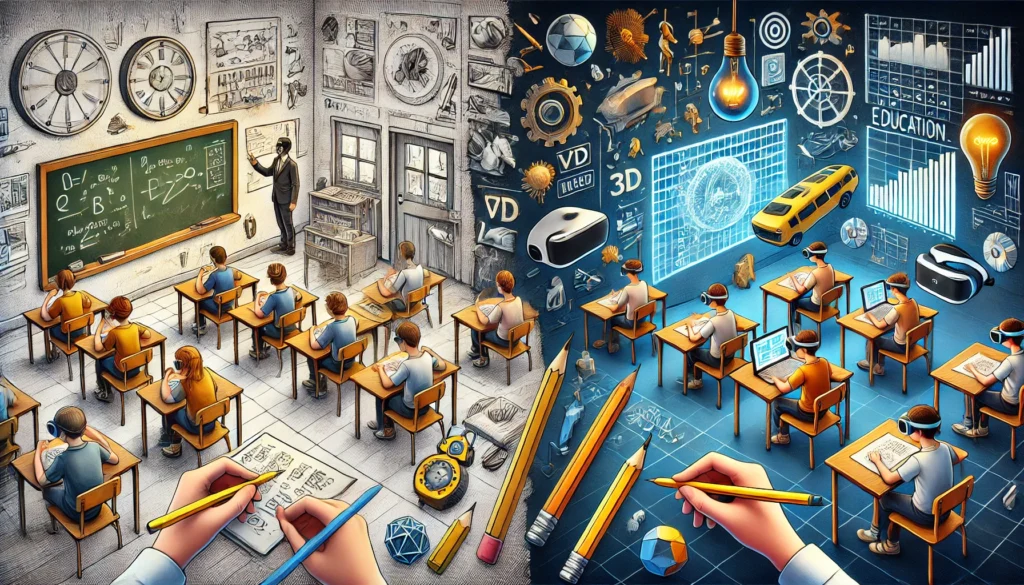/ Jan 31, 2025

Pencil vs. Pixel: How Educational VR Headsets are Revolutionizing the Way We Learn
The traditional classroom has long been a staple of education, where students sit at desks, scribbling notes with pencils, and absorbing information through a one-way dialogue between teacher and student. However, with the rise of virtual reality (VR) technology, the landscape of education is shifting dramatically. Educational VR headsets, in particular, are revolutionizing the way we learn, providing a more immersive and engaging experience that has the potential to transform the way we teach and learn.
The Pencil: Traditional Teaching Methods
For decades, the standard method of teaching has been based on rote memorization and regurgitation of information. Students sit through lectures, take notes by hand, and then are expected to recall the information for tests and exams. This traditional method has its limitations. It’s often biased towards rote learning, neglecting critical thinking, creativity, and problem-solving skills. Moreover, it’s passive, with students being mere recipients of information, rather than active participants in the learning process.
The Pixel: Educational VR Headsets
Enter educational VR headsets, which are redefining the learning experience. VR technology allows students to immerse themselves in virtual environments that mimic real-world scenarios, providing a more interactive and engaging way to learn. With VR, students can step into a 3D world, interacting with virtual objects, and manipulating digital whiteboards, textbooks, and even other students. This interactive learning enables students to explore, experiment, and learn at their own pace, fostering a more hands-on and personalized experience.
Benefits of Educational VR Headsets
Studies have shown that VR headsets have numerous benefits for students:
Pencil vs. Pixel: What’s the Future of Education?
As VR headsets continue to evolve and become more accessible, we’re witnessing a significant shift in the way we educate. While traditional teaching methods will still have their place, VR headsets are poised to revolutionize the way we learn.
Pencil: Traditional teaching methods will continue to exist, but they will be complemented by VR headsets, integrating the best of both worlds.
Pixel: VR headsets will increasingly become the norm, redefining the learning experience, and transforming the way we teach and learn.
Conclusion
The battle between Pencil and Pixel is not about abandoning traditional methods, but about embracing innovation and evolution. Educational VR headsets have the potential to improve learning outcomes, increase student engagement, and revolutionize the way we teach. As we enter this new era of education, it’s essential to recognize the value of both the Pencil and the Pixel, harnessing the best of both worlds to create a more dynamic, interactive, and effective learning experience.
By integrating VR headsets into the education system, we can reinvigorate the learning process, paving the way for a brighter, more effective, and more enjoyable future of education.